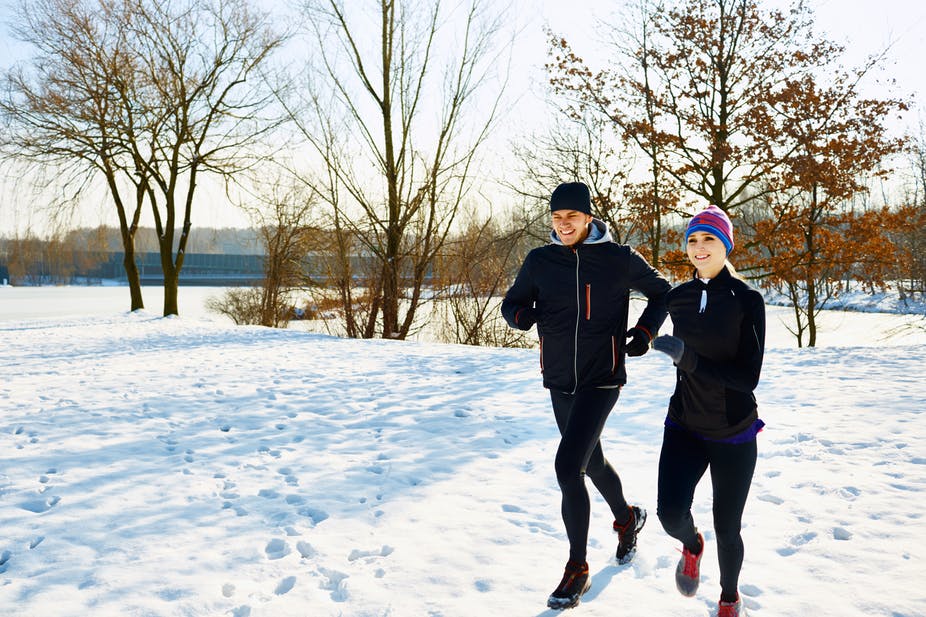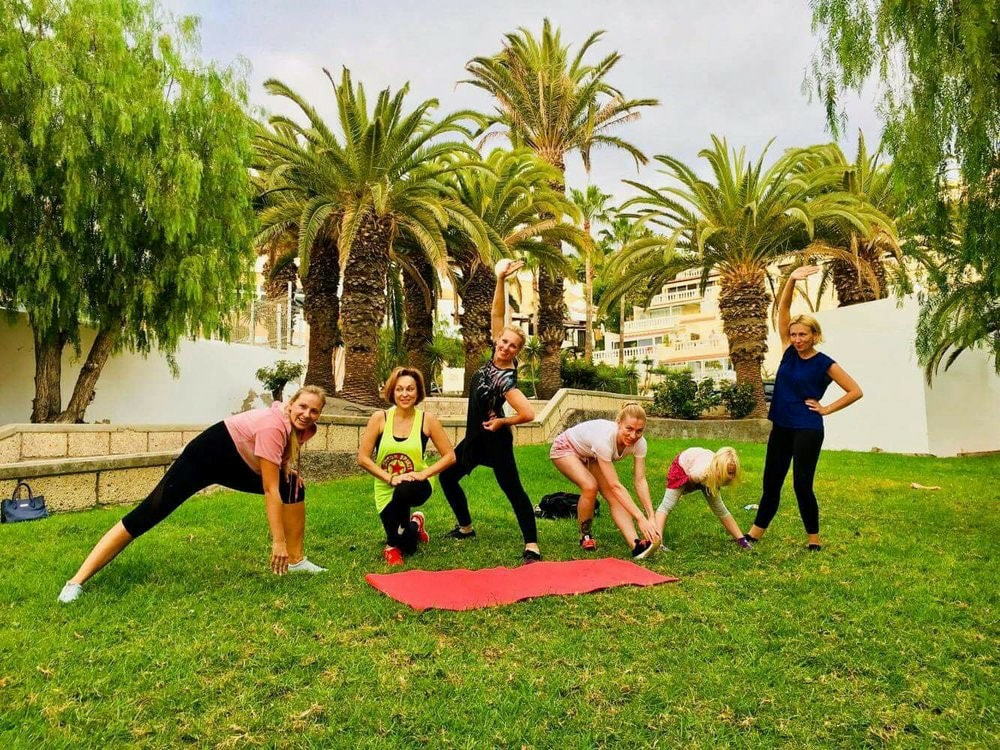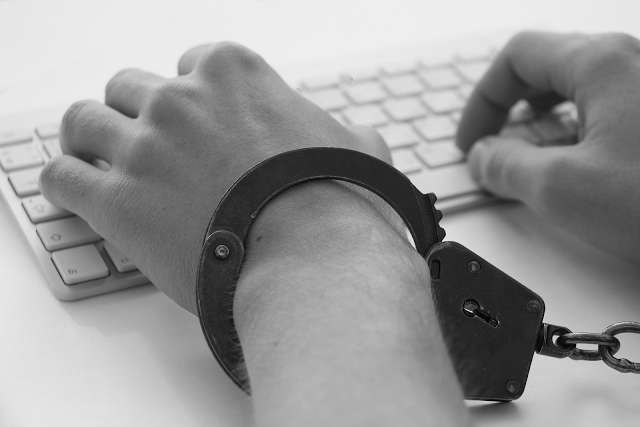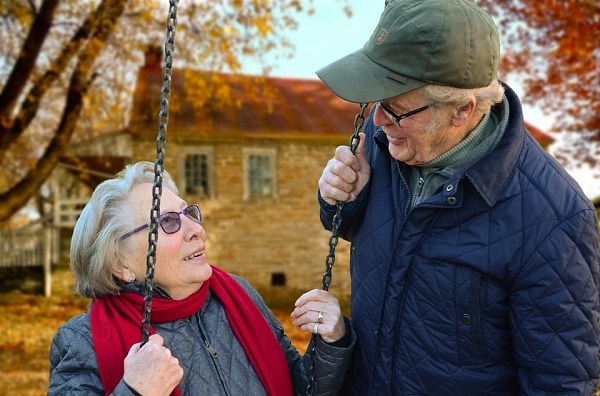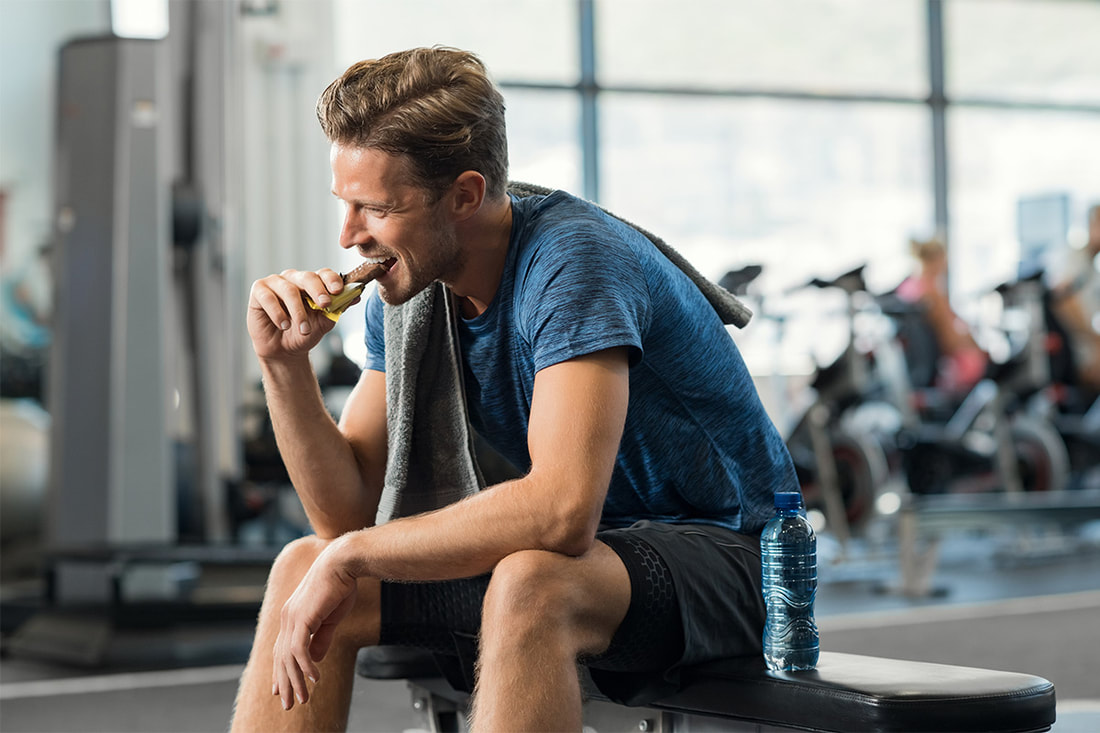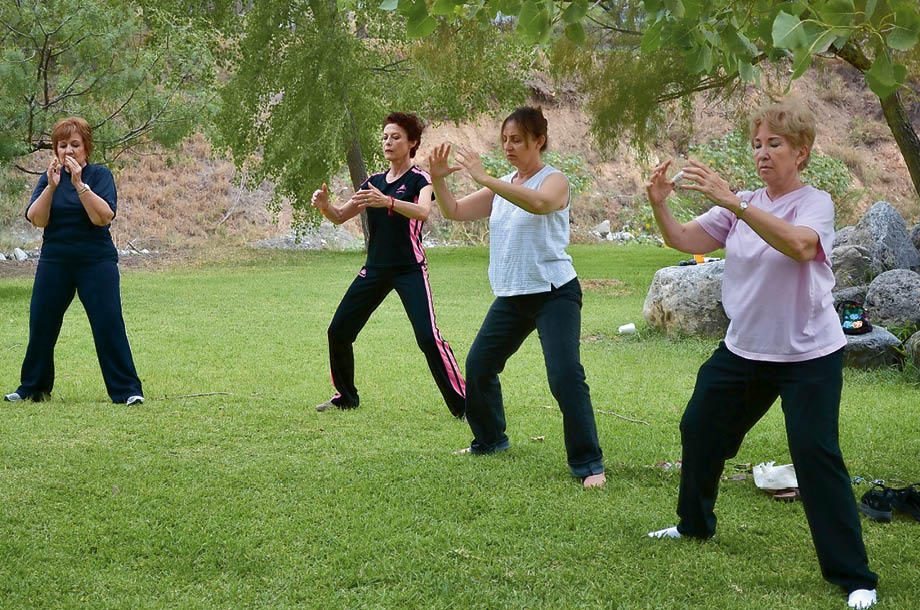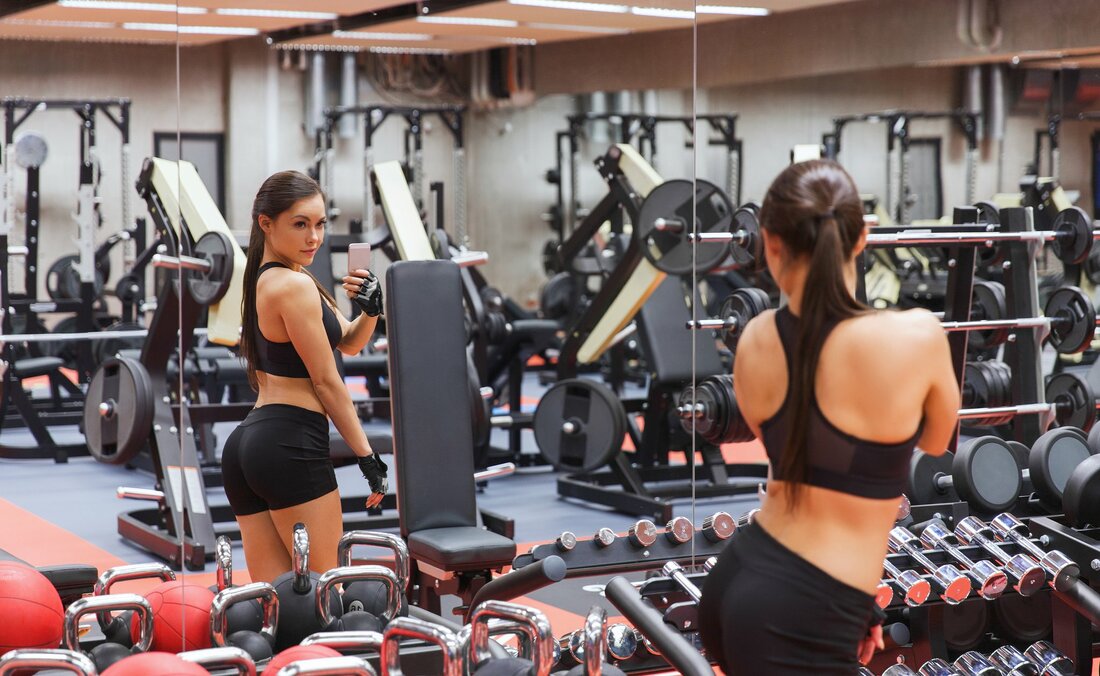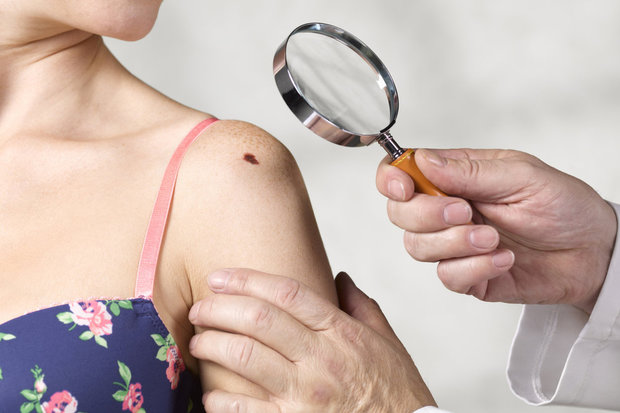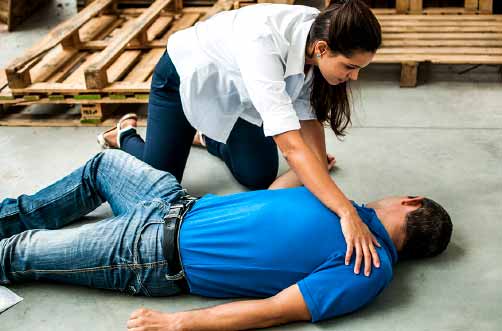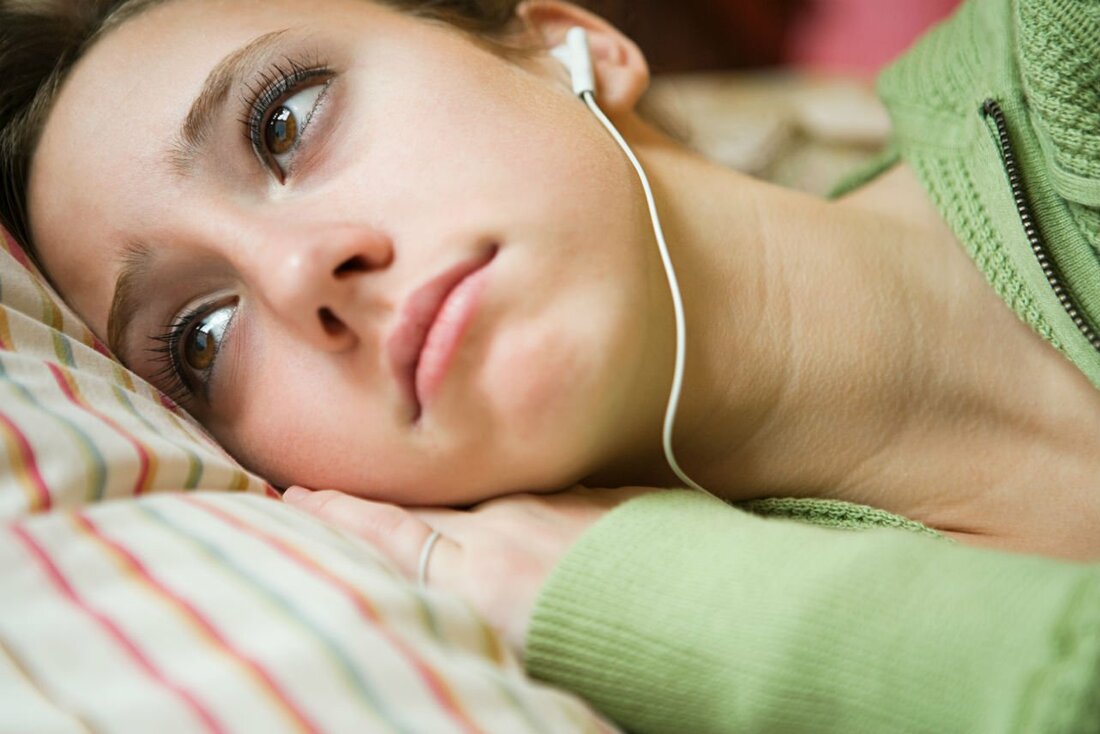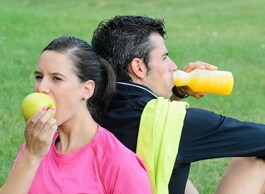|
It’s a child’s strong belief that every action of its parents is acceptable, whether good or bad. Children believe their parents to be their educators, mentors, heroes and above all, role models throughout their lives. A sedentary parent nurtures a sedentary child (mostly) but those parents who exercise regularly and eat healthy foods are nurturing a generation of kids who are bound to grow into healthy adults. Parents are the numero uno source affecting the way in which children perceive a healthy lifestyle. But, the key to an active family lies in adhering to regular workout routines during any season of the year irrespective of rain or sun. Seasonal Workouts Every adult should aim for at least 30 minutes and kids for at least 60 minutes of physical activity daily irrespective of the weather outside. Sun or rain, winter or summer plan your workout in a smart way such that the weather outside or the people inside don’t disturb the health routine at any cost. Winter Workout The chill breeze and longer nights are bound to make us feel sluggish, lazy and sleepy. Layers of clothing, thermal wear and sweaters make us feel warm and alongside this, helps us cover up the additional weight that we carry with us. The snow outside (in a few places), ice-cold weather and the absence of sunshine are great excuses to do away with your physical activity routines, but fitness is a lifelong journey that’s got no breaks. During winter, try doing these calorie-burning indoor activities:
 Dry Leaves might Fall but Never Fall behind Your Exercise Schedule During Fall Dry Leaves might Fall but Never Fall behind Your Exercise Schedule During Fall Swinging your Body during Spring Spring is a lovely time to spend sometime outdoors enjoying the colorful flowers and the pleasant climate. Bring in a few changes to your routine-maybe, control your portion sizes and cut down on intake of added sugars and fats. When you become comfortable with this routine go for something new. The weather outside makes it easier for you to fulfill your daily exercise routines. The activities given here can contribute towards your day’s total exercise:
A study shows that obese children who participated in lifestyle-based intervention activities during school mostly forgot the activity after a near-to two months break or so. Instead of allowing your child to watch television and relaxing in the luxuries of the sofa request your child to stay fit by helping them in the following ways:
Autumn The leaves might fall and the flowers wither away, but your motive remains strong through autumn. Enjoy the brownness around you, go for a brisk run or play a game of frisbee in the sun. If there are any plans for vigorous physical activity during the weekend plan and eat accordingly. Eat your meal three to four hours before the weekend and your snack an hour before the exercise schedule. Ensure that the meals are enriched with nutrients such as proteins and carbohydrates. Pre-activity snacks should always be low-fat and low-fiber which might be a piece of fruit or likewise. Post-workout snacks must never be missed to replenish your body with energy. In between all this, remember to drink plenty of water. Just like your eating habits, regular physical activity too must be a part of each one’s daily routine. Any changes you make must be done gradually so that you stick with a habit for a lifetime once the change (for the good) is made. In between all the seasons are the holiday seasons that once again interrupt the regularity of physical exercise schedules. But, with a determined mind and by making exercise as a priority (and not an option!) it is always possible to stick to your activity schedules. For more details on squeezing in exercise as a part of your holiday routine too please visit the website www.firsteatright.com. Remember, any activity that you choose to perform helps you burn extra calories instead of storing them. 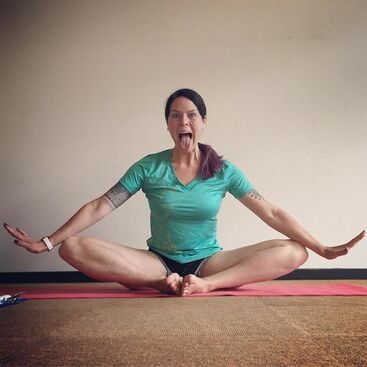 Simha Mudra: King of Facial Exercises Simha Mudra: King of Facial Exercises Chubby cheeks and a dimple chin might be adorable during childhood but not thereafter as we all crave for high cheekbones, flawless skin and the perfect symmetry. Each of us secretly wish to exchange some of our features to stay beautiful and work hard for a chic body. Some focus on flat abs, some on curvy hips, muscular arms and few others wish to lose face fat. There are specific exercises for reducing desired body parts such as crunches for abs, lifting weights for your arms and so on. But is it even possible to lose face fat? Fat in your Face Face fat is generally the result of excess weight gain, but it can also be due to genes. While some carry excess fat around their abdomen or thighs you might be one of those rare ones who carry it on your face! Generally, it is due to overconsumption of fats, carbs or salt that one starts developing a puffy face. You face is no exception and it acts like every other feature in your body. Once you start leading an unhealthy lifestyle and eat improper foods, your face too starts gaining fat just like other parts of your body. Lose it or Spruce It! After a weight loss program, we hear positive comments on our body but most comments that we receive regarding our facial looks are negative. People feel sorry for our deflated cheeks and even wish that we had not lost any fat on our face. So indeed, losing fat on your face is possible and it is good. Just like how good and bad balance this earth, we do have some bad news to balance this good news. It is possible to lose face fat, but you cannot specifically target weight loss in this area. With this, I guess most of you reading through would have guessed the best way to lose face fat. Yes, its by losing overall excess body weight and leading a healthy lifestyle. In this journey, please don’t focus completely on cutting down calories as this might land you only with muscle loss and not fat loss. It’s always better to rely on a well-balanced meal that meets your nutrient requirements as well as focuses on controlling portion sizes. Complement this with increased water intake, decreased junk intake and plenty of sleep. Exercising is the best way to lose face fat but don’t overdo it. You might land up with a sagged face. Balance strength training and cardio workouts along with your regular ones to bring your total body weight to a healthy one. Apart from this, there are many popularly known simple exercises that people believe in and definitely worth a try!
 An Applause Works better than a Raise Sometimes! An Applause Works better than a Raise Sometimes! Appreciation, praise and rewards boost our spirits and make us work harder. In an organization however hard you might work and meet requirements, the project is a success only when all team members do their part of work dedicatedly. The same holds true in the case of sports such as hockey, cricket and football. Excelling in something is appreciable whereas cooperating as a team and achieving success is noteworthy. Not all can be dedicated team players. It’s a skill that one must acquire for the benefit of the individual as well as the team. Sometime back if someone had questions on the best form of exercise to practice, he/she would have got an answer straight away to pursue the one that he/she enjoys. There have been articles on different exercise forms suitable for different kinds of people. For example, the introvert might prefer to go for a walk whereas an extrovert would find it amazing to enroll for a Zumba group class. But now, a new study has come up with the research that people who participate in team-based activities reap greater advantages over individual-based exercises. Greater Inspiration through Better Coordination Football, tennis and badminton reap greater benefits than swimming, cycling or doing gym exercises. That’s purely because your interactions and coordination in team-based or partner-based activities add up to the benefits of physical activity even as much as improving your longevity. We are in love with the social media and there are evidences suggesting that posting selfies on these media sites pave way for better weight loss results (Visit the website www.firsteatright.com for more details on the study). What’s the underlying reason behind all these? Love & Affection Bond our Lives We are born alone into this world and we die alone. In between birth and death is the journey of life and the various people we meet are fellow passengers who get on and off at different junctures. Our lives revolve around the people we live with, interact and bond over. Weight loss posted on social media sites improve results due to the appreciation and positive feedbacks given by our friends which motivate us to work harder. Receiving the best performer award is a recognition which pleases the performer, leaving a positive comment on your mom’s food motivates her to cook much more varieties and appreciating a child’s effort in completing his/her school work brings about even greater results. Such things improve our mental well being which exists as the basis of a happy life. With exercise too, if health and well-being are primary concerns then choosing partner-based or team-based exercises are best for the individual.  Individuals Rarely Miss Out on a Game-based Exercise Individuals Rarely Miss Out on a Game-based Exercise ‘Associated’ Longevity A study was conducted on 8500 individuals who had no history of cancer, heart attack or stroke for a period of 25 years. These people were given a comprehensive health and lifestyle questionnaire which included questions on the type, frequency and duration of physical activity performed. They were followed-up for 25 years during which 4500 of them died. Many of them replied that they did a variety of activities every week but were asked to choose one as their primary exercise form in the questionnaire. The researchers used this exercise form mentioned to check for longevity after adjusting factors such as education, drinking habits and socioeconomic background. Results showed a crystal-clear connection between social sports and longevity. People’s lifespan increased depending on the game/exercise they chose to perform-tennis players reaped maximum benefit as this added 9.7 years to their lifespan, badminton extended life by 6.2 years, soccer by 4.7 years, cycling by 3.7 years, swimming by 3.4 years, jogging by 3.2 years, calisthenics by 3.1 years and health club activities by 1.5 years. Though the duration is not known exactly, it doesn’t matter too much as gym-goers who reported more than 600 minutes of total physical activity every week of which gym routine occupies 150 of those minutes reported least longevity years compared to tennis players who reported using the racquet for 100 minutes of their total 520 minutes of activity per week. There’s evidence piling up supporting the link between social interaction and good health and also evidences support that doing moderate-intensity exercise is good for longer life than practicing vigorous-intensity exercise over the period. Increasing the intensity and upping heart rate might feel satisfactory at that point but it doesn’t make you happy, feel relaxed or energetic as a game of tennis or soccer. Tennis helps you bond with your partner during the game. Running and weight lifting too are good for your heart health and strength. Something is Better than Nothing Overall, involving in any form of exercise is better than not exercising at all. Any form of physical activity that involves playing is a double bonanza as it not only invokes muscle strength and heart health but also benefits your mind giving you emotional strength and bonding. Also, you are likelier to forego a gym session quoting excuses but unlikely to miss out on a game of tennis as you have someone waiting for you and whose workout is dependent on your presence. Hence, game-based exercises improve consistency and in turn longevity. Take out your badminton racquets, kick your football and enjoy your game reliving childhood days. You will surely realize on how much fun you have been missing all these years.  Sleep Holds Least Priority Compared to Likes & Shares Sleep Holds Least Priority Compared to Likes & Shares An hour without Internet connection or mobile phones in your hand seems like you’ve been cut off from the external world for eons. Our lives are intertwined with social media sites which act as our lifeline to contact our friends, stay in touch with near and dear ones and remain updated on the latest news and activities. On the exterior, we have a clear picture that social networking sites have improved our friendship, relationships and love towards people tremendously but when we start going through the layers within, there seems to exist a world surrounded by hate, lust, jealousy and greed. Every person on social media faces the wraths of mental and physical agony one time or the other. Maybe its time for a social media detox! Social Media Detoxification Detoxification is the removal of toxic substances from our body while social media detox, a type of digital detox, is the period during which individuals stay disconnected from social media sites as a process of removing/clearing away toxic substances from our mind. As a heavy blow to our problems have emerged the use of multiple accounts which individuals use for different purposes. Most of us use social media platforms to connect with friends, stay updated about their whereabouts and be aware of the latest issues surrounding us. In this process, we become obsessed with other people’s life, start browsing on our friend’s friend and the chain continues likewise. Surfing their photos, activities and check ins makes us compare our lives to theirs, brood over our shortcomings and misfortunes and put us in a state of mind where none of us are really happy with what we have but keep searching for happiness and joy in what other people are up to! “The grass on the other side is always greener” and social media has advocated this theory even more than before. It makes us feel as though other people are leading happier lives and our is less fun-filled and joyful compared to others. But thankfully, the craze for using these sites has started to decrease slowly as people are becoming more aware of the loss of precious time going through Instagram posts and twitter feeds. A lot many from the younger generation have been leaving social media websites slowly but steadily. Such people strongly advocate a social media detox as this therapy helped them improve productivity, focus more on the work at hand and stay relaxed. There are scientific evidences too backing the disadvantages of social media: A Mental Health Spoiler Studies show increased levels of depression, anxiety and isolation in people who use social media often. Researchers saw that those who checked into their media accounts more frequently were twice likelier to succumb from these mental health spoilers compared to their peers. Young or old everyone is addicted to the Internet and suffer from the pressure to look beautiful, stay blemishless and young forever. While established as sites to promote connectivity social media has promoted isolation and disconnection among members of the society, individuals remain far off from eye contact, physical touch and voice tone makeovers-elements that make a conversation livelier, richer and something to cherish forever. Relationship Sucker There are a greater number of couples speaking over their phones rather than conversing with one another, more members in the family playing games over phone during weekends than spending quality time together exchanging their experiences or playing outdoor/indoor games together. There are some things that are not in your control when it comes to social media. A friend who tags you in a meme or a boyfriend who posts a photo of both of you dancing at a club might be awkward for you and cause embarrassment. These can damage relationships too as studies have found that when people try to remove embarrassing content from online sites they suffer from a decline in the relationship with the offender. Our comments, shares and jokes that we post in our pages are shared again by hundreds of individuals. We don’t know how it will affect the other person ultimately. Breaking Down Physical Health Apart from ruining mental wellness and peace, social media use affects our physical health too, especially sleep routines. A study in 2014 showed that individuals aged between 19 and 32 spent over an hour daily checking their social media accounts and, on an average, some 30 times a week. Almost 57% of them complained of disturbed sleep routines. Researchers feel that the exposure to bright light before bedtime, the possibility of a mental, cognitive or psychological arousal and the intention to stay online all the time might be reasons for poor sleeping habits. Poor sleep quality can be detrimental to our health. Interested to sleep better? Its time to pay a visit to www.firsteatright.com for simple clues and practical ideas on improving sleep hours and quality over time.  Working or Surfing? Working or Surfing? Pushing Productivity into Darkness In between work, lunch breaks or free time we tend to log into our social media accounts and check on the latest updates. This affects our creative thinking and hinders our professional lives greatly. A study shows that people spend more time on social media than they think they do. There was another study that showed that people spend more than 2 hours on social media at workplace. Maybe that’s the reason for our stretched working hours and incompetency to meet deadlines. Likes and comments hold a priority over commitments and deadlines at office! We think that multitasking is simple and switch between work window and the social media window but practically it does affect our quality of thought and productivity at the end of day. Winning the Mortality Race Depends on your Walking Pace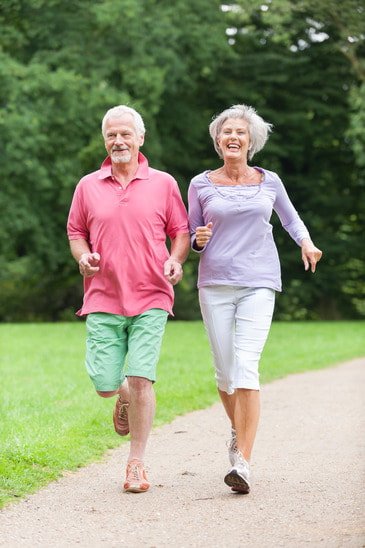 Brisk Walking in Old Age Halves Mortality Risk Brisk Walking in Old Age Halves Mortality Risk Keeping pace with individuals, matching each other’s footsteps and establishing a sync between two walking friends is pivotal for a great walking session. Comical it might seem for the outsider to see one of the spouses trailing behind the other while going out (this is not because of respect but due to lack of pace) or for a bunch of friends who always seem to miss out on their closest friend on any of the outings owing to his/her slow pace and the affected person feels neglected or at least lacks the attention of others. Slow and steady wins the race might be an age-old proverb that seems fine and you are inclined towards it but in this world, things happen in a fraction of a second and life becomes upside down even before you realize what’s happening around. Pizza deliveries, food deliveries and even grocery deliveries fight it out for the top place in least delivery time. Such is the importance of a fast-paced life these days. Walk Fast The study comes at a time when individuals wish for incredible internet speed and monumental transport speed but don’t feel like moving their body or shaking their hips. According to the new study if you want to live longer start walking at a faster pace to reduce the risk of mortality and cardiovascular disease. There can be none unaware of the benefits of walking and walking for as little as less than 120 minutes too decreases mortality risk. Studies on walking have always dealt with its benefits on our health and the quantity of time spent on this activity but never has anyone come up with an accurate walking speed that would further increase your long-term consequences. The research was a large-scale one which included researchers from two different continents. One team explored the various links between walking and likely chances of death due to cardiovascular diseases, cancer or other causes. You might be walking daily but the definition of walking differs from person to person. Some people visit the park in the name of walking to chat with their friends and take a stroll as slow as possible. Some others walk so briskly that it seems as though they are walking for their life and there are a few individuals who are unmindful of the surrounding and their only focus is to walk at a normal speed. The pace of your walk determines your mortality risk which is independent of the total physical activity performed by the individual. Study The study analyzed data of more than 50,000 walkers who categorized themselves into one of the three groups ‘slow,’ ‘average,’ or ‘brisk’ depending on the pace of their walk. While a fast pace is anywhere between walking for 5-7 kilometers per hour some people also consider indications such as breathlessness as a sign of the pace. The researchers adjusted the pace to suit factors such as age, sex and BMI to predict mortality rate. Irrespective of other factors pace of the walk seemed to predict mortality risk. Brisk walkers were at a 21% decreased risk of mortality and the average walkers faced a 24% decline in mortality risk. The study showed that the elderly population aged 60 or above reaped greater benefits-individuals walking at an average pace faced a 46% decline in cardiovascular disease-relate death risk and brisk pace individuals faced a 53% lower risk. Now walking has a few strings attached to it. First one must initiate his/her interest in walking. Next, it’s all not only about walking but also of high concern is the walking pace. The importance that we give to the pace in which we walk comes of aid when walking more is not possible due to lack of time or in the absence of a walking-friendly zone. Increase your walking pace to decrease your cardiovascular health risk and premature mortality risk. The results have no if’s and but’s. They are to the point and establish the fact that walking at a faster pace increases life span. Along with your walking regimen implement a well-balanced diet fulfilling all nutrient needs to lead a healthy lifestyle. Get in touch with registered dietitian nutritionists at www.firsteatright.com to help you plan a healthy diet. A mismatch between calories consumed and calories expelled is the basis of weight gain. But obesity is also affected by genetic, environmental and lifestyle factors. While we don’t have a hold over genetic and environmental factors changing our lifestyle and improving our health is in our hands. Many individuals put on weight during puberty years and as young adults as they adopt the so-called modernized eating habits that includes mostly junk or processed foods. These guys also love to spend time on their favorite couch watching television or fidgeting with their smartphone. When overweight/obesity strikes these individuals, it is purely because of their lifestyle and they are to be blamed entirely. For those suffering from haphazard lifestyle changes getting in touch with reputed dietitian nutritionists at www.firsteatright.com can help you lose weight and stay active. But there are exceptional cases where the person is affected by obesity in the first few months after birth. What’s the case with these people?
All in the Gene There are almost 118 genes associated with obesity and some of them encode leptin (LEP), leptin receptor (LEPR) and others. Leptin is a hormone that regulates satiety and energy expenditure and its level is directly dependent on the presence of fat in the cells. Leptin receptor deficiency is a condition that causes severe obesity since the first few months of life. This condition is inherited from parents, but the parents might never show symptoms of it in their lifetime as it is inherited in an autosomal recessive pattern. Individuals with this condition are born with a normal birth weight but feel hungry constantly after few months of life and put on excess weight in sometime. Like the name suggests, affected people don’t have the ability to realize satiety due to deficiency of a receptor indicating fullness and they stay hungry for most part of the day. Such hunger results in hyperphagia (chronic excessive eating) and in turn, obesity. These individuals might also suffer from underdeveloped sexual organs and might be unable to bear offspring. People with leptin receptor deficiency develop strange behavior too as their hunger triggers them to fight with other children for food, hoard food or even secretly eat them inside restrooms to satisfy their hunger. This deficiency is caused due to mutations in the LEPR gene. This gene gives out instructions for making a protein called the leptin receptor (regulating body weight). This protein is found in cells of different organs and tissues and also in the hypothalamus, part of the brain that controls hunger, thirst and sleep. The leptin hormone switches on the leptin receptor. Fat cells in the body release leptin. More the number of fat cells in the body greater is the release of leptin. As the fat stores increase, in the hypothalamus of the brain the binding of leptin to the receptor sends chemical signals that affect hunger and start producing a feeling of fullness. In leptin receptor deficiency, the gene mutation prevents the receptor from responding to leptin and hence, resulting in excess weight gain and hunger. Lifestyle Intervention is not the Solution In a strange condition such as leptin receptor deficiency increasing your physical activity by indulging in vigorous-intensity exercises or reducing calorie intake by following a strict diet is not going to solve the problem. Even obesity surgeries (bariatric surgeries) fail to produce the desired effect and the only option left out now is to choose a drug-based treatment approach. A few years back a group of researchers found that treating the patient with a peptide (a compound that activates the melanocortin 4 receptor (MC4R)) could regulate body weight. Leptin binds to LEPR and produces the melanocyte-stimulating hormone (MSH). MSH binds to its receptor and sends the satiety signal to the body. But when the LEPR gene is mutated the entire process shuts off. The patient suffers from incessant hunger which raises the risk of obesity. In the study, the researchers used a peptide that binds to the MC4R in the brain which helps the patient realize satiety levels. The researchers also observed significant weight loss in these patients. But why the peptide causes such an improvement in satiety signaling is yet to be discovered. We can hope for a drug that helps people with LEPR gene mutation to avoid obesity by using it and by also exercising and eating healthy food. Remember the days when we used to form a group and wait in front of the principal’s office to be reprimanded? Rather than feeling ashamed for our mistake we have never minded getting a lecture for the sole reason that we were together as a group! Its always easier or simpler to fight for justice, do some mistake, experience something new or gain attention when we do it together rather than individually. Weight loss also falls in this category. If you’ve been on a weight loss mission along with your better half its high time that you rethink over it. Now don’t be annoyed that I’m letting you into two different school of thoughts simultaneously. As you read through below things become clearer.
Two Souls with One Goal There is a possibility for two different outcomes when couples try to lose weight together: either it could take you to another level where both of you end up losing the desired weight or push you into gutters as your relationship becomes jeopardized. Weight loss is the most-commonly desired New Year resolution but a difficult one to accomplish unless the individual involved is dedicated and passionate about it. A study published in the journal Health Communication has left readers impressed with the fact that couples who exercise together lose weight together. Weight loss involves creating healthy eating habits, working out together and improving relationships by caring for each other’s exercise routine, supporting each other through the journey, enjoying the company and being outspoken about difference of opinions, if any. The study was conducted on 389 individuals who were living with their partners and focuses on the individual’s partners’ approaches to weight loss. Finally, the researchers identified four different ‘relational environments’ after analyzing the response of the participants. This included ‘synchronized’ where both partners were together as a team and carried a positive attitude towards weight loss, ‘lone battlers’ where both the partners executed least team efforts and were facing greatest relationship strains (this group mostly never discusses about weight loss), ‘contentious cooperatives’ were those who were in between ‘synchronized’ and ‘lone battlers’ and these couples face conflicts sometimes and finally the ‘autonomous’ individuals who receive irregular encouragement from their partners without any other interference from them. Most common weight loss strategies practiced by these couples included:
Competition is a great motivator, but it should be focused and not leave the relationship strained. There are other studies that show that when one of the partners try to lose weight the other too ends up losing a few kilograms though he/she might not be actively involved in the process. But couples who wish to lose weight together must be cautious in their attempt. It is advisable to align your approach with the relational environment otherwise there is a lingering danger of unrest. Couples who workout the best relational environment and support techniques from their partners made effective progress comparatively. Such an effort helps the couple improve their relationship as well their weight loss efforts. Quick Tips for the Couples
For some individuals doctors are demigods who have brought them back to life. For every little cold or bruise certain people have the natural tendency to visit a doctor and get their illness sorted. Others try home remedies and put off meeting the physician as much as possible as they dislike taking medicines and getting poked! Among different people most men fall into the general category of people who dislike going to a doctor. Maybe they feel its not ‘manly!’
Paying a visit to your doctor every year for a health checkup is mandatory irrespective of your fitness levels. This protects you from health problems and keeps your mind stress-free. But many men are adamant against visiting a doctor for checkups and the reasons they give can surprise some while others stay shocked. Quoted here are top ten reasons from our beloved male counterparts:
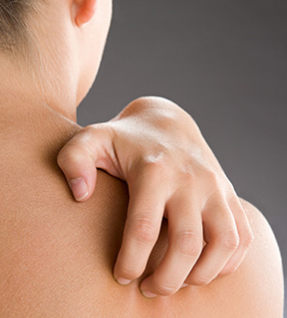 The Pin & Needle Effect of MS The Pin & Needle Effect of MS Human anatomy remains the same in men and women and it’s the underlying cognitive skills and behavior that show great variations. Its always been a topic of conflict whether these variations have a biological background or are the expression of societal influences. Its been evident from certain studies that there are sex differences in the brain that exist as the basis for male- or female-specific behaviors. The concept can be extended to neuroanatomy, neurochemistry and neuronal structure which are influenced by the presence of gonadal sex steroids. Science has shown a clear-cut bias towards males in the case of developmental onset disorders such as autism spectral disorders and ADHD while adult onset disorders are biased towards females. Trauma-related disorders, stress and anxiety disorders and autoimmune diseases affecting the nervous system exhibit stark differences between the male and female population. Neurodevelopmental Disorders Autism spectral disorder (ASD) is a classic example of male-dominant neurodevelopmental disorder having a sex ratio of 4:1 (male: female). Autism is predominantly a genetic disorder but having no direct link with the sex chromosome. It could be that genes on the Y chromosome interact with the ASD susceptibility gene and influence the occurrence of the disorder in the male population. Another hypothesis is that, ASD is diagnosed more in boys compared to girls as it might be underdiagnosed because of female-specific characters in the girl. Girls communicate in a better way and are also better at expressing non-verbally too both of which might increase the chances of underdiagnosing the condition. According to the extreme male brain (EMT) theory brain is adaptive to male and female cognitive profiles in two domains namely empathizing (respond to emotions) and systemizing (ability to analyze). The female population is inclined towards empathizing compared to males but individuals with autism exhibit too much of the male profile. A study of 2500 children affected by autism tried to analyze this theory and found that such females had greater social communication impairment, lesser cognitive skills and decreased ability to adapt compared to males. Memory problems were more seen in males while the female gender was better at retrieving memory details. But there are other studies that did not find any gender variations in autism-related symptoms, adaptive skills, developmental adaptability and behavior problems. Affective Disorders Stress is universal, but women are greatly attracted to it just like a magnet. Mood and anxiety disorders perfectly exhibit the bias towards females. Women are two-times at a higher risk of suffering from anxiety disorders, stress-related problems and depression compared to males. There are evident biological processes that seem to greatly contribute towards this bias in terms of genetic vulnerability, female hormones that fluctuate owing to reproductive functions and brain’s reaction to such fluctuations that induce depression. Social and environmental factors such as the role of women in everyday life, sex-specific socialization and the secondary role they play all contribute towards greater stress in a woman’s life. While depression can strike anytime a woman is at a higher risk of depression during different phases of a reproductive cycle-before menstruation time, during pregnancy, after childbirth and after menopause. Adding to this are events such as infertility, miscarriage, oral contraceptives and hormone replacement therapy. Statistics show that 80% of seasonal affective disorder (SAD) cases are in females. SAD is generally due to impairment of the hypothalamus-pituitary-adrenal (HPA) axis. Most depressive disorders occur due to differences in HPA functioning. Neurodegenerative Disease Parkinson’s Disease (PD): Men are generally predisposed to PD, almost .5 times more compared to women. Also, symptoms such as nervousness, fatigue, constipation and restless leg were greater in women while sexual dysfunction, daytime sleep and frequent saliva dribbling were common in men. Alzheimer’s Disease (AD): AD is seen more in women. There are different reasons given to this and one major reason is the longer life tenure of women which puts them at an increased risk of AD. There are biological reasons also given in terms of age-related decrease in sex hormone (estrogen, progesterone and testosterone), the impact from increased risk of other diseases such as diabetes and cardiovascular disease and brain-glucose metabolism. Even after controlling for increased life span women exhibited a faster and greater deterioration of cognition with age than men. Go to www.firsteatright.com for a detailed description AD, why it attacks women predominantly and how to help people with AD lead as normal a life as possible. Multiple Sclerosis (MS): While women are at a greater risk of MS, men go through a worse experience if MS attacks them. Studies show that hormonal factors influence disease onset and the course of the disease. White matter was greatly affected in male MS patients and this also indicates that white matter might play a sex-specific role in cognitive dysfunction in MS. Pain: You would have guessed it right-its women who exhibit greater response to pain. A small hurt, a sign of blood or a spasm and women suffer from extreme pain while most men take it in their stride and keep moving on. Studies show that chronic pain conditions such as migraine, tension headache and fibromyalgia are profoundly intense in women comparatively. When researchers scrutinized the role of sex hormones in pain they came up with the following. Estradiol and progesterone allow and block the effect of pain while testosterone appears to block the pain effect and remains protective. Social and environmental pressures also seem to influence the reaction shown by males and females in response to pain. Its acceptable for a woman to exhibit pain while men who exhibit their pain for every small hurt or problem are considered less-masculine. This might be the reason why women show greater pain and agony compared to men.  Indian Ayurveda uses this Plant as a Weapon against Many Ailments Indian Ayurveda uses this Plant as a Weapon against Many Ailments Cancer has been a malicious disease having the potential to kill the person depending on its severity. While patients do survive after suffering through the hardships of chemotherapy and radiation most of them lose their energy in the process and it takes so much more to bring back their cheerfulness and quality of life. Scientists have been incessantly trying to discover drugs for cancer and even chemicals extracted from a small flowering plant have helped in this endeavor for decades together. While trusting plants for their medicinal values has been in practice since time immemorial there are few as fruitful as the rosy periwinkle in curing diseases. The Madagascar periwinkle/rosy periwinkle is Africa’s gift to the world. This ornamental plant is also widespread in India more commonly known as ‘Nityakalyani’ or ‘Good Night’ flower. Ayurveda, India’s centuries old natural healing methodology practiced since the Vedic period uses this flower to prepare medicines against diabetes mellitus and wasp stings. Despite such advantages the rosy periwinkle is also called as the “Flower of Death” due to extreme toxicity of the flower and the plant that consuming even a little more than the suggested small amounts can prove to be fatal to life. Alkaloids for Life The Madagascar periwinkle boasts of containing up to 70 different alkaloids (many of them have pharmacological effects on humans) including the anti-cancer compounds vinblastine and vincristine. Unfortunately, the plant’s potential benefits were not discovered until the late 1950s when its extract was submitted for testing. Soon after, the researchers were mesmerized by the plant’s anti-cancer potential and ability to destroy white blood cells. Leukemia, a cancer of the blood and bone marrow includes formation of white blood cells in extremely high numbers. Hence, something such as the rosy periwinkle that decreases the white blood cell count is an invaluable addition to treatment of leukemia. But nothing is as simple as it sounds and everything has its share of challenges. The challenge here was that, producing 1 g of vinblastine required around 500 kilograms of dried leaves. Vinblastine has been listed as an essential medicine by the World Health Organization (WHO) that’s maximum cost-effective and safe due to its use against bladder, testicular, lung, ovary and breast cancer. Read more about any of these cancer types by visiting the website www.firsteatright.com. With such a huge quantity of the plant required for generating vinblastine researchers and scientists have been trying to understand the process of production of vinblastine by the plant for more than half a century and finally succeeded not until recently. From Plant Synthesis to Lab Synthesis Researchers have finally discovered the missing genes in the pathway using latest genome sequencing technology. Vinblastine is one of the most structurally complex active natural elements present in plants and all the pain and efforts that have gone into this discovery are worth it! In this process, researchers have also identified enzymes that build vinblastine precursor chemicals (such as catharanthine and tabersonine). By using synthetic biology techniques these are chemically coupled to produce vinblastine. This would be of noteworthy help to either increase vinblastine production in the plant or by placing synthetic genes into hosts such as yeast or plants. With thorough knowledge of the genetic pathway and its chemical structure researchers can now create quite a formidable quantity of the alkaloid using synthetic biology techniques. But this includes an overwhelming number of 31 steps in total (right from the primary chemical precursor to the final product). Thousands of leukemia patients have benefitted from drugs derived from the Madagascar periwinkle-simply an ornamental flowering plant whose advantage was accidentally discovered turning out to be a boon to the world indeed! Gearing up for a serious exercise session includes pre-workout foods and also taking care of post-workout needs by preparing something healthy and interesting. The calories burnt, sweat dispensed and energy lost definitely calls for munching upon something that fills the tummy. People have the theory that increase in physical activity increases appetite. But most people eat less after a workout session which is extremely surprising and makes us skeptical about our body’s condition. Individuals love to plan when it comes to something like physical activity or a game. They plunge into the shopping mood purchasing athleisure wear, comfortable shoes and other stuff. People even try storing some energy bars or energy drinks fearing fatigue or exhaustion post the exercise session. Planning on clothes and accessories gives you an upper hand when it comes to comfort and preparation but packing your bags with food is unnecessary. Scientists have found that exercising decreases your appetite and does not make you hungrier.
Exercise Prevents Appetite A group of researchers analyzed the effects of exercising on the body after a workout. Incidentally, one of the researchers was a fitness enthusiast who ran three times a week (45 minutes each time) but was always left with decreased craving than usual. His theory is that individuals experience a surge in body heat while exercising which in turn signals the brain that appetite needs must reduce. The process is compared to what happens in the body when we eat very spicy foods. Consuming spicy food containing hot chili peppers increases body temperature and decreases appetite because these peppers contain a compound called capsaicin that interacts with sensory receptors (TRPV1) in the body inducing a sensation of being hot and flushed. There are few instances where capsaicin has decreased appetite which makes it a potential compound for research relating to weight loss. Applying the same concept to exercising, the researchers wanted to explore whether the increased body heat experienced after exercising might fail from stimulating neurons in brain responsible for homeostasis regulating eating process. To get an answer, the researchers focused all their attention on a set of neurons called as proopiomelanocortin (POMC) that are involved in appetite suppression. These avoid brain cells from being exposed to serious fluctuations in brain plasma composition. In order to check whether the POMC brain cells respond to body temperature fluctuations too, research was conducted on mouse hypothalamus tissue. The mouse’s tissue was exposed to both capsaicin and heat to check whether the cells respond to these stimuli. Almost two-thirds of the cells responded to both the stimuli. When the mice’s arcuate nuclei were exposed to capsaicin the creatures ate less food. The mice were also made to exercise on a treadmill for 40 minutes thereby creating similar environment and body temperature. The animal’s body temperature shot up and reached a plateau after 20 minutes, but body heat stayed on the upper end for more than an hour during which the mice’s appetite decreased. It was seen that the set of animals that took up exercising ate 50% less than the rest who did not exercise. Also, mice whose TRPV1 receptors were suspended experienced no change in appetite after the treadmill test. This clearly proves that body temperature regulates eating pattern similar to the way in which hormones and nutrients affect us. Habits Affect Results Repeatedly doing a task makes it easier to perform, repeatedly reading something familiarizes us with the subject and likewise, repeatedly stimulating receptors makes them less sensitive. When someone is repeatedly exposed to vigorous-intensity exercise the TRPV1 receptors become less sensitive. This makes a common man or a sports person practicing for an event feel as hungry as a wolf after the event or practice session. Get ideas on how to remain energetic before, during and after working out with these pre- and post-workout food list available at www.firsteatright.com. Hence there is more research needed in this field to completely understand the process that happens during and after exercising. Maybe more mice and more science can remind us of hunger signs. We have also come across an important understanding that body temperature impacts feeding pattern, and this exists as a field that can be further explored for potential weight loss strategies. It comes as no surprise that a Mediterranean diet is god for health. Upheld to be one of the best-suited diets for people across age groups, it primarily focuses on eating plant-based foods such as fruits, vegetables, whole grains, legumes and olive oil with minimal quantities of chicken and lean meats. Unlike other fad diets that follow impractical and unhealthy principles, the Mediterranean diet has the right mix of health and nutrients required for a healthy life. Beyond these is the latest study that following a Mediterranean diet prolongs the life of older men and women.
Telomers Telomers are essential parts of the human cell that strongly affect the ageing process of cells. Like the cap for a pen, telomers are present at the end of each DNA strand protecting our chromosomes. When the cap is lost, the pen’s quality might decrease owing to dryness of the ink and likewise, without telomers DNA strands might become damaged disallowing cells to perform their jobs correctly. The length of the telomer acts as a biomarker of aging. As we age, telomers do become short causing cell ageing and finally halting their normal functioning playing the role of an aging clock for each cell. Shorter the telomer, shorter is the life expectancy and higher is the chance of acquiring chronic diseases. Apart from age other important factors such as stress, diet, obesity, lack of exercise and smoking are said to shorten telomer length. A Harvard study showed that adhering to a Mediterranean diet was linked to longer telomers and surprisingly it was not any one of the food components such as whole grains or fruits that promoted telomer length, but the dietary patterns followed by an individual. Singling Out Specifics While there have been plenty of studies focusing on the benefits of consuming a Mediterranean diet not many of the, have bothered to focus on older people as well. A study in Italy has come with decisive conclusions that following a Mediterranean-styled diet is the secret to a longer life. The study was carried out in two parts with the first study following up on 5,200 people aged 65 and older for almost 8 years. Every time the individuals followed the foods recommended in the diet such as fruits, whole grains or olive oil, the individuals were awarded a point. For every one-point increase in scores they were at a lower risk of death from all causes especially coronary artery disease. During this 8-fmediteyear study period around 900 of the study participants died. The second was an analysis of a huge data pile and other studies which would have included almost 12,000 people. The analysis showed that every one-point increase in the diet score was associated with a 5% decrease in death risk. But all these are only observational and there is no causal relationship for the same. Basically, the Mediterranean diet includes food components that can be included forever in our life such as fruits, veggies, nuts, grains, olive oil, low consumption of red/processed meat and alcohol. First Eat Right’ website www.firsteatright.com clearly introduces to you the advantaged of following this diet in the long tun. The added advantage of consuming such meals together as a family (That’s Mediterranean lifestyle for you) or along with friends promotes well-being and decreases stress, factors that can affect the length of the telomers! Never-ending sneezes, watery eyes and runny nose are common during this time of the year as winter has no plans to spare anyone easily. Clinics and hospitals too are crowded with people suffering from a bad cold. Or is it a sinus infection? Oh! Its just confusing given the choices between the two and their similarities in symptoms. Rhinitis or Sinusitis? Got to understand the heading? If no, don’t worry as it is not a great deal and the terms rhinitis and sinusitis refer to cold and sinus infections respectively. It’s no fun tackling the watery nose, headaches and rolls of tissue paper during winter but its more terrible staying unaware whether its cold or sinus as the symptoms often overlap. It might be surprising to know that more than 200 viruses can cause cold, but it is also good to realize that 40% of colds are due to a single family of viruses called the rhinovirus. It is highly likely that cold spreads when an infected person sneezes or coughs sending droplets of the virus-infected fluid into air. A cold-infected person who touches/sneezes on a surface leaves it open for infection to spread. Sinuses are a group of air-filled and connected spaces in the skull. These spaces are present in between your eyes, behind your nose, cheeks and forehead and this information might answer your questions on a lingering headache that often happens when you suffer from cold. There are membranes in the sinuses walls that produce mucus. It is essential to know that mucus is not the result of an allergy/infection but is produced by each of us for protecting us against germs and other pollutants. The sinuses also contain hair-like structures called cilia that push the mucus out of the sinus walls and into your nose. But when sinusitis occurs the sinus walls swell, and this prevents the mucus from draining out of the nose. Symptoms
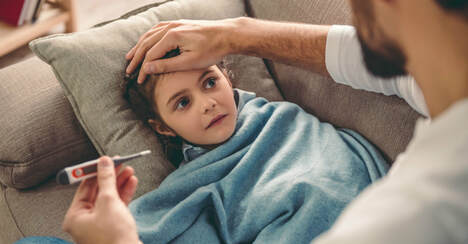 High Fever Calls for a Physician’s Attention High Fever Calls for a Physician’s Attention Children too experience similar symptoms, but additional symptoms of sinusitis include ear pain, tooth pain, bad breath, headache, swelling around the eyes and persistent cough. Subtle yet Stable Difference The main difference between a cold (also called as viral sinusitis) and a bacterial sinusitis is that symptoms of cold begin to improve in a couple of days (3-5 days probably) whereas bacterial sinusitis symptoms stay for weeks or even month together. So, what you probably guessed as cold might be a sinus infection if it is not resolved within 10 days or so. Also, cold symptoms might start to diminish making you heave a sigh of relief but bounce back and worsen indicating that what began as cold has changed into a bacterial sinus. Treatment Cold often goes away on its own and there is also a famous proverb that ‘Cold disappears in seven days with medication and in a week without medication’. People often choose home remedies to tackle the problem. Often, a sinus infection too resolves on its own without any medication but sometimes the following treatments can make the affected individual feel better:
Its ok to wait for a few days to check whether the symptoms resolve on their own before consulting a doctor. If symptoms linger on, it might be a bacterial infection that needs the doctor’s intervention. Also, symptoms such as wheezing, fever above 103 degrees, rash, shortness of breath and persistent cough need a doctor’s attention immediately. Breasts are composed of glandular (milk glands and ducts), connective (fibrous tissue) and fat tissues. Breast density is calculated by comparing the amount of breast tissue in comparison to fat in the breast. Generally, dense breasts are composed of higher amounts of glandular and connective tissues and lower amounts of fatty breast tissue.
Age-related Density Physical examination or observation (size, shape, firmness, BMI or weight) cannot tell you about breast density and the only way to measure it is by using a mammogram. Age is a determining factor in breast density-younger we are, denser our breast is. As we grow old density decreases owing to declining estrogen levels which happens due to aging, all the more due to menopause. It’s also common to see individuals having dense breasts later in their adulthood too (almost 40% women above the age of 40 have dense breasts). It might be due to your genetic predisposition! There are two reasons to be concerned about if you have a dense breast:
Having dense breasts is nothing to be afraid of nor is it uncommon. It doesn’t guarantee a breast cancer in the future but only increases the risk of a cancer possibility. Important risk factors for a dense breast include age, medication, low BMI and genetics. Younger women have denser breast. Older a woman grows, less-denser her breasts become, and it might be due to medications such as hormone replacement therapy after menopause that increase breast density or the work of other medications as well. Genetics too plays a role here and women with dense breasts usually have a mom or grandma with a dense breast. Categorization The BI-RADS (Breast Imaging Reporting & Database Systems) assess breast density and classifies it into four groups:
Staying Healthy with Dense Breasts Getting a dense breast is not in our hands but all we can do is engage in activities that reduce our risk for breast cancer. Common lifestyle changes that can be implemented include:
It is better to compare results with the previous year’s results to better understand your risk. Women with a family history of breast cancer or dense breasts must talk to their physician and arrange for specialized programs that meets the requirements.  Underdeveloped Mouth Controls Cause Drooling in Babies Underdeveloped Mouth Controls Cause Drooling in Babies Waking up your little munchkin is quite joyous as you eagerly await his/her little coos. You are also in for a surprise as there are sticky patches of white near the little one’s mouth which is nothing but saliva that flows out unintentionally. Its understandable that infants drool a lot during their first two years of birth as they don’t develop total control over swallowing and the muscles of the mouth until after 24 months or so. This also brings upon yet another question that lingers in our minds-What about our teenage children or adults who are rather embarrassed with their drooling practice occasionally? Accept it or not, drooling happens in most of us once in a while most probably during sleep. Its common to sleep with our mouths closed but some people (for instance, those with a blocked nose) sleep with their mouths open as breathing happens via the mouth. Swallowing happens less frequently during sleeping and in such people, it can cause saliva to accumulate and ooze from the sides of the mouth. Causes It’s also common for people to drool while they are awake due to problems such as an infection, neurological condition or other issues. It’s been noticed that individuals with Parkinson’s disease, amyopathic lateral sclerosis, myasthenia gravis and a history of stroke and traumatic brain injuries are likelier to drool. Neurological problems affect the muscles and nerves that control swallowing. This prevents the mouth from closing to swallow the saliva and prevents the individual from controlling the saliva that drips out. Other conditions such as epiglottitis where the epiglottis (cartilage in the back of the throat that helps in swallowing) swells, Bell’s palsy where face muscles become weaker and Guillain-Barre syndrome (an autoimmune disease that harms nerves throughout the body) can also cause drooling. Infections such as sinusitis, tonsils and strep throat can prohibit swallowing and lead to drooling. There is also a chance that diets high in acidic contents can cause excess saliva production. Struggling to identify those foods that are high in acidic content? The website www.firsteatright.com has the perfect solution to your problem listing down the high-acidic content foods. Sports days are all about competitions, relay events, exercises and performances. One particular sports day in school remains etched in my memories as that specific year was all about performing Tai Chi in front of my parents and all other spectators. The first time my teacher uttered the word ‘Tai Chi’ there were giggles amongst students, but the practice started soon after and there was no looking back from then. We did a splendid performance at school and the entire crowd applauded gleefully as it was a new concept to most people out there. The steps were simple but the whole program was artistically choreographed. When I come across articles on Tai Chi these days it reminds me of my good old school days and what benefits I could have reaped right now if I had taken up the classes outside school hours and gone forward with learning this art form.
Originally concepted as a martial arts form Tai Chi is nowadays practiced for its health-promoting benefits. Tai Chi is rightly called as meditation on motion and the website www.firsteatright.com discusses more about this. A Body-Mind Coordination Classified as a moderate-intensity aerobic exercise, Tai Chi requires using 50-58% of heart rate reserve, a clear focus and total concentration while practicing it. Only if these conditions are fulfilled the performing individual reaps 100% benefit of improved aerobic capacity, muscle strength, balance and motor control all of which add physical fitness to the body as well improved attention, decreased strength and anxiety as well as cardiovascular improvements that bring advantage to a person psychologically. There have been numerous studies highlighting the advantages of Tai Chi in aiding people with depression, Parkinson’s disease, stroke and brain injury. It’s been prescribed as the best exercise form for elderly population and for individuals who have never been into exercising until now and are interested in starting to do some physical activity. Studies have shown Tai Chi to help people over the age of 65 to reduce stress, improve posture, balance, mobility and muscle strength in the legs. A recent study tried to find out Tai Chi’s influence on brain metabolism and muscle energetics in older adults using a brain-muscle magnetic resonance spectroscopy (MRS) examination. The study group included participants who were more than 55 years of age, did not undergo any Tai Chi training in the past 12 months and were willing to participate in a 12-week training program. The MRS was used to measure brain and muscle chemistry using MRI machines in 6 elderly adults who were experiencing a 12-week Tai Chi training program. H- (brain) and P-(muscle) scans were performed in one session before and after training. Results showed increase in neuronal health of the brain and improved recovery rates of a metabolite that was involved in energy production in leg muscles. This shows that Tai Chi might have a positive effect on neuroplasticity and increased oxidative capacity of muscles in the leg. While all these make us happy the study size is extremely small and the scenario must be applied on a larger group to come to effective conclusions. Tai Chi is one exercise form that can be practiced by anyone-right from young children to older adults and even those tied to their wheelchair. This is the best exercise form for people suffering from a disability. It is highly unlikely that practicing Tai Chi will bring about injury when practiced correctly. It is also gentle on the knees, joints and muscles which shows that it can even be done by people suffering from knee pain. It is necessary to enroll yourself with a good instructor and learn the art precisely before starting to practice it vigorously. Movies at the theater, partying with friends, out for a romantic vacation with your spouse or a lazy day at home-we spare none and post away selfies or photos of ourselves enjoying our lives onto every single social media platform. Living the moment and enjoying every occasion in life are the greatest blessings. What’s the need to promote our happiness online, share our good times and update people around us with what is happening in our lives? Are people so much interested in knowing about what’s happening in others’ lives or are they jobless to keep simply probing on what others are doing in their lives? Meanwhile, it is also true that we enjoy attention from other people, their likes and comments which are inspirational, motivating and something that we look forward to in our lives. Even the most successful people on Earth need some energy boost and encouragement. There might be a few self-motivated individuals, but these people too need others to acknowledge their achievements which serve as a greater boost in life to achieve more. If you are planning to go for a weight loss program it would be a great option to publicize it on social media platforms, after all its been proved to aid in your weight loss efforts!
Click it, Post it, Lose it Click your selfie, post it on Facebook, Twitter and Instagram and reap success in losing weight with your weight loss goals-that’s the latest way to succeed in your weight loss endeavors. This is not a comical statement but the result of a research study that included 33 people and their journey of losing weight. The group was split into two-surgical and non-surgical-and the members were social media regulars who tweeted/blogged about their weight loss experience. The participants were followed-up for four years after their fruitful efforts. When researchers probed into the secret behind their endeavors, they understood the following:
Connecting People We live together as one family at home eating, sleeping and functioning together. But most of the time we keep updating our social media profiles, checking out other people’s updates and stay online. When such is the scenario, it makes sense that social media can indeed help individuals in their efforts to lose weight or achieve some other positive goals too in life. We must also understand that not every individual is able to get the support they need from the people around them or even their own family members with whom they interact daily. That’s mainly because each of us are different with different perspectives in life. For instance, when you want to lose weight and start avoiding fried foods, your grandma might comment that its all about how much you exercise and there is no point restricting/reducing your intake. But, when you join a weight loss group, it’s an association between like-minded individuals who are bent on achieving their goal irrespective of the tiring efforts and constant hard work that must be implemented. If you wish to pursue the goal of weight loss together as a family the best way to go about it is by visiting the website www.firsteatright.com. When everyone in the family support each other and work towards betterment achieving the goal becomes easier. Seek the help of others, relish the company of people around you and take out the best from every one of them to achieve your goals and stay happy in life. 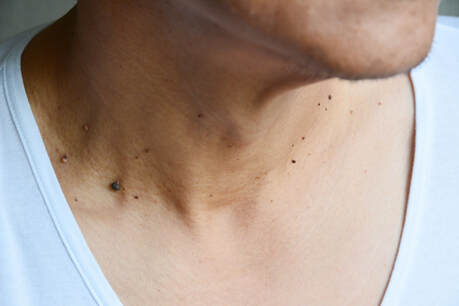 Count to 40! Count to 40! A mole on the inside of your palm, located exactly on a spot above your hips and below your chest on the back or a small spot near the corner of your lips are sought-after spots for a mole! They are considered to be your lucky charms in fact. We are all born with moles in different places of our body but there are also chances of developing new moles as we cross adolescence. A Blind Spot Moles are small, colored spots on the skin that are a cluster of skin cells appearing anywhere in the body. They are harmless and better to be ignored unless they change in size, color or shape which may be indications of skin cancer. A-Z information on skin cancer is available at www.firsteatright.com right from the symptoms to the treatment available. Some moles appear in places that are not prominent but a few of them might stare at you from the face, hands or even eyes. Its 100% unnecessary to remove a mole unless it bothers you, irritates your skin by rubbing against your clothes, interrupts your smooth shaving process or seems to upset your physical appearance. Most people have anywhere between 10 and 40 moles in the body. The best way to get a mole removed is surgically but individuals hesitate to get this done owing to unnecessary healthcare costs and try home remedies. On any given day, it is better to meet a dermatologist and get his/her approval before removing the mole at home. Given below are the common remedies practiced by individuals and surprisingly, none of them have been proven to be effective through population studies or research:
While all of the above methods seem to be simple and followable there are no proofs backing their effects. Even the creams that are available at drugstores are proved to have dangerous side effects on the skin as they cause thick scars to form in the area of the mole. Some individuals become over-conscious and try removing the mole with a scissors or razor for immediate effect. Sadly, this increases the chances of an infection or a permanent scar in place of the mole. Removing a mole might nullify your chances of becoming aware if the mole is cancerous or not. Failing to test the mole for cancer can lead to spreading of the disease throughout the body which can result in life-threatening effects. The best way is to consult a dermatologist and go with either of the two proven ways that have been promoted for mole removal: Surgical excision: The area surrounding the mole is numbed, the physician uses a sharp device to cut out the mole and some skin surrounding it. Finally, the doctor stiches/sutures the wound Surgical shave: The area surrounding the mole is numbed and a blade is used to shave off the mole. There is no requirement for stiches or sutures here  Quiz Yourself on Various Topics to Become Versatile Quiz Yourself on Various Topics to Become Versatile Schools days were never complete without our black/red markers which found their presence in each of our notebooks. Some were bemused by the different color highlighters available and used them all in one page to highlight important details. Despite pronounced use of this phenomenon by students to learn and grasp new things, it does nothing much in reality. Sometimes this practice can even defer us from using the knowledge gained in reasoning out things in the future. Kids differ in IQ levels and grasping powers depending on their genes and this has been undoubtedly proved by various studies, details of which are elaborated at www.firsteatright.com. Every kid has his/her own unique way of understanding things and reciprocating them. Some kids might underline important keywords, some children love highlighting keywords with various bright colors while some other kids might reread things repeatedly to take it to their mind. All these are well-known ways in which children study, but they are not ‘the’ versatile ones! If that’s the case, what are we to do now? There are various journal studies and research that have come up with some of the most effective learning strategies: Play the teacher’s role: Kids love to imitate their teachers and pose questions to others. Try replicating the same while studying too. Ask yourself plenty of ‘Why?’ questions that activate your thinking cells and use this knowledge in the future. A child whose mind is filled with questions all the time is one that thinks about various things. Only when there are thoughts, there is scope for action. Further, questions can help a kid make sense of the information just read. Self-made quiz masters: Cover various topics from various parts of the textbook. Avoid going in order as this establishes a monotonous pattern ringing a bell in your mind even before the question arises (owing to studying them repeatedly previously). Switch between various topics to sharpen memory skills and use them effectively later. Time your quizzes intelligently: Study your topics and decide on specific times of the day, week or month to quiz yourself. As you become adept on various topics space these quiz schedules further apart. Quiz yourself frequently: Remember showing our tiny tot flashcards of apples and bananas while teaching them alphabets? Flashcards are a well-proved way of helping a person remember things. Use this concept in your studies too. Make flashcards of important topics, form questions and write down answers from the topics that you cover in your syllabus. Quiz yourself on these topics at regular time intervals. This helps you retain your study material fresh in your mind and also figure out those in which you lag to improve your knowledge skills. Even when you are with your friends it does no harm to quiz yourself or start a small quizzing game with others on various study topics covered in your syllabus. Acknowledge the best performer with a stylish pen maybe rotating this amongst yourselves depending on the performance. Quiz yourself on definitions, various formulas and other information keeping in mind the meaning, logic and use of the resources as you read. Familiarizing yourself with different concepts and topics is the best way to become proficient. Happy quizzing!  Sleep Apnea-Disturb Sleep, Disrupt Quality of Life Sleep Apnea-Disturb Sleep, Disrupt Quality of Life The day has ended on a positive note and you feel blessed to hit the bed early. The curtain blinds are intact, you are mesmerized by the fragrance of aroma candles and the dim lighting makes you sleepier. Closing your eye, you doze off for some time after which you suddenly wake up gasping for air. The scenario by itself sounds frightening and it makes you scared, but this is a common one that has occurred to many of us. The scenario might be repeated but the reason behind it differs each time. What exactly do you think is causing it? Causes Anxiety: Anxiety or panic attacks occur mostly during the night and in these cases the affected individual wakes up gasping for air. It occurs in 70% patients with anxiety disorder and these people can experience a panic attack even during daytime. Despite it, the entire experience of awakening gasping for air due to a sudden attack is extremely frightening as they happen during sleep without prior symptoms or triggers. Sleep Apnea: In between sleep involuntary pauses in breathing is what is termed as sleep apnea. People affected by this condition snore and also gasp for air multiple times during the night affecting sleep quality. This hinders quality sleep but apart from that sleep apnea can also pave way for heart disease, high blood pressure, memory and mind-related problems. Obesity too is a risk factor for sleep apnea. Understand how obesity and sleep apnea are intertwined with helpful inputs from the website www.firsteatright.com. Asthma: Coughing, wheezing and tightness in the chest are common symptoms of asthma but nocturnal asthma is the term given for symptoms that occur while sleeping. People with nocturnal asthma don’t experience any symptoms of asthma during the day but only suffer from it during night time. Asthma-affected individuals are likelier to experience gasping at night. Chronic obstructive pulmonary disease (COPD): Damage of air sacs in the lungs makes it difficult to push air out of the lungs and this is COPD. COPD-affected individuals wake up gasping for air. Heart Failure: Shortness of breath is a common symptom of heart failure which a person might primarily notice during physical activity. This becomes common in course of time even when a person is sleeping or lying down. Post-nasal drip: Mucus and saliva are produced continuously but it flows to the back of the nose and throat and are swallowed. It is common that the individual might be unaware of the process. Post-nasal drip is when mucus accumulates and slowly drips down the back of the throat. Accumulation of mucus makes breathing difficult and if a person is asleep, he/she might wake up gasping for air. Diagnosis & Treatment Once the symptoms and medical history are checked the doctor suggests a few tests that can determine the cause behind gasping for air. Depending on the nature of cause any of the following treatments are recommended:
You seem to be at the peak of career, enjoy the best times of life with family and can’t ask for more in life when your heart suddenly stops working. Someone performs a CPR and your heart is revived with an automated external defibrillator without which death was most likely. Post the treatment the physician works hard to ensure that his/her patient lives as normal a life as possible, but a study shows that returning to normal day-to-day living might not be as easier as thought, especially when the cardiac arrest is coupled with a brain injury.
The study compared two groups of patients. The first group consisted of 250 patients and they were assessed on their performance six months after their cardiac arrest. They were compared to the other group consisting of 119 patients who suffered from a heart attack six months back. Both groups were asked to fill a questionnaire asking about their social life and work experience before and after the condition. Cognitive and emotional problems were also evaluated. Results showed that:
After Resuming Work? We see a huge number of heart attack patients resuming work quicker than cardiac arrest patients but sadly one in four people quit their job within a year of returning to work. Even more shocking is the fact that those who quit are between the 30-39 and 60-65 age group and are of a lower educational and income level comparatively. The statistics are alarming as young people who are yet to accomplish greater feats in life are quitting jobs suddenly. This affect’s their quality of life, ability to live independently and lowers self-esteem. A study published in the Journal of the American Heart Association showed that of the 22,394 heart attack survivors who were working before a heart attack almost 91% returned to work within a year after the attack. But a year after resuming almost 24% of them quit their jobs suddenly. This brings us to an important point-rehabilitation after the heart attack should not only focus on enabling the person to return to work as soon as possible but also maintain their ability to work in the long term after returning to work. The Sooner You Resume Work, the Better it is for You Rest and rehabilitation after a heart attack is recommended but never prolong them unless required. For those who experience depression anti-depressants or therapies might help. Eating a healthy, nutritious meal and living an active lifestyle can prevent your heart from suffering from further damage. Get yourself evaluated and find the right diet suiting your body requirements by visiting the website www.firsteatright.com. Fatigue and anxiety issues can also be solved by working with a therapist. Correcting any of these issues is necessary before resuming work. Only then will it help you continue work for a long term. Missing your routine can bring about an anxiety depression and returning to work would boost your confidence and help you overcome psychological hurdles. It also helps you avoid economic hurdles and improves your overall well-being. Amongst the different genres of music there are a lot many whose vote is for sad music! None of us like to live a sad life but is always ready to tune into a sad beat or two which is weird. Also, in times of misery and agony its natural for us to divert our attention towards something that’s cheerful and lively but people enjoy hearing songs that synchronize with their sad mood rather than seeking comfort in joyous ones.
Music for the Soul Music is integral to humans and there is aplenty research supporting the fact that it offers a soulful and therapeutic experience. Music has the power to trigger emotions, recollect memories, stimulate new neural connections and seek attention. Parties and celebrations are always filled with rocking music that’s comprised of fast-beat songs interspersed with a few melodious ones. There is even a journal study that shows that people love to listen to sad music when they are experiencing deep agony resulting from situations such as loss of a loved one, a job application rejected or end of a relationship. Maybe they substitute sad music in place of the lost relationship or loved one and seek solace. Individuals who are sad, unhappy, agonized or in pain too choose sad music that helps them relate to their inner sadness. Music acts as a bridge between personal experience and the outside world. We love to cling onto someone/something in terms of pain and music is this ‘something’ that helps us recover. Any of us wish to be left alone to mourn our loss and ponder upon our experience and music creates this personal space for us. For instance, when we lose a loved one it might take weeks, months or even years to get moving. In between this time the mourner experiences all kinds of pains and feelings that is common in case of death. He/she goes through stages of denial, argument, anger, sadness and acceptance and it is in the stage of sadness that music comes to his/her rescue. The sad music and songs help the mourner feel the sadness and surrounds him/her completely. Once he/she has crossed the stage, there is no bargaining or anger but the sadness that lingers in one corner of the heart forever. Listening to sad music or songs revives all buried feeling, brings back nostalgic memories and meets the emotional requirements of the individual. The emotional trauma experienced while mourning the death of our beloved is greatly taxing and takes a toll of our health. It even makes us wonder if grief is the price we pay for the love we bestow on our beloved. Read more about this at www.firsteatright.com. Music is an aid in times of pain. It mends our emotional well-being which is an integral part of our overall well-being. There is no doubt about this and its helpful to leave our agony and pain to the mercy of music confiding in its healing and restorative power. An Escape from Reality There is no doubt that each of us have tuned in to a song or two in times of hardships and negativity to get through the day. A recent study has shown that sad music makes the mind to wander which leads to realization and reflection of the self which in turn helps us feel better. Happy music is composed to make the listener happy but never is sad music composed with such a goal in mind. Even the listener feels happy and high spirited after listening to up-beat songs but always maintains a distance with sad ones only enjoying the musical experience. A happy song can make you sad if the instances from the song are only memories in your life now. But a sad song helps you relate to your experiences and events in life, you are encouraged by your life’s associations with the lyrics of the song or its concerning topic and enjoy memories that come thereafter. Its ok to listen to any genre of music but the ultimate aim must be to get out of your melancholy and look at life with a positive attitude than before. Imagine these scenarios:
Strike While the Iron is Hot Most times we prioritize others needs and fulfill their requirements before focusing on ours. Food is not a divine exception to this. Despite realizing the goodness of certain foods and the advantages of eating some of those daily, we are tempted to go for the burgers and French fries at the restaurant or spread a generous dollop of butter and jam on the bread when no one’s around the house. Exercising too faces the same mishap. You know that you need to go for a walk or stretch yourself to stay fit and reduce the chances of arthritis problems that’s been haunting your mom since ages, but you don’t feel ready-enough to forsake your sleep and get geared to go for a walk or exercise in the park. A new research comes as a full stop to all these lame excuses and procrastinated habits and it might just be a short while before you get on track and start realizing changes for the better. Except for a rare few government ads and hoardings that reach people with the intended message most of the public health messages deflect people’s attention as these ads are often filled with information that you and I don’t want to hear. Results will never be favorable when you ask an alcoholic person to stop drinking, request a smoker to stop smoking or ask a couch potato to move around more often. Rather they bring out the self-defensiveness lurking around us (as these suggestions indicate our lack of discipline and bad choices) and protest against these healthy choices too. The knack of getting things done depends entirely on our smart choices and shrewd ways of handling difficult situations. Love for Others Develops Love for Oneself A new study has found that when people think beyond themselves and focus their thoughts on others or are involved in spiritual thoughts, they are likelier to become more active. The study involved 220 overweight/obese sedentary adults who were fit into one of the two self-transcendence group or a control group. One set of people in the self-transcendence group were asked to think about their loved ones or God while the other set was asked to make positive wishes for people whom they knew or even for strangers. The control group was asked to think about their least-important values or principles. All the participants were repeatedly flashed with health messages that requested them to do physical activity and also explain about the ill consequences of staying their present self in the long run. For example, they were shown messages that showed that staying active strengthened their muscles, using the stairs instead of the elevator was suggested for a quick work out or that sedentary behavior increased the risk of heart diseases. Participants were monitored on their daily activities using fitness trackers and comparisons showed that people in either of the self-transcendence groups were more active in the ensuing months and activities in brain areas responsible for positive feelings and thoughts were much pronounced. Researchers indicate that people often do things and deeds for their loved ones that otherwise they would never do for themselves. The quality of self-transcendence (caring for others before caring for oneself) is a great tool for change. Realize the power of love and the advantages of using it rightly by visiting the website www.firsteatright.com. Next time when you want to have a cheesy pizza, stay sedentary or eat junk daily it is effective to bring the results of the above study in your mind. Such pleasures have a long-term side effect that impact your health badly making you vulnerable for heart diseases. Such consequences are sure to worry your loved ones and only if you are healthy can you think of leading a happy and peaceful life with your near and dear ones. Hence, these stand as motivating factors to accomplish your health goals and stay fit relishing every day of life. A lovely dinner date in your favorite eatery meets your expectation of a well-spent weekend with your spouse. Couples enjoy going out to movies, hanging out with their friends or planning for a weekend trip to their favorite destination too. But again, any of these must be followed by a tantalizing meal. Whichever route we take, the destination remains the same (eating out). Couples complement each other in eating out. How well do you think the same people would stand by each other when it comes to supporting their partner in his/her weight loss journey?
Handling the Relationship Tangle Many couples are horrified at the mention of the phrase ‘diet restriction’ as it indicates a change not only to the ‘dining out’ routine but also to what they eat at home. Its quite difficult when some individual tries to change a routine that’s been practiced since ages. During such situations the relationships too seem pretty messed up owing to opinion clashes. Worse, the dieting spouse might change his/her food needs and eating plans as the weight loss journey progresses. Such hassles are inevitable, but every supporting spouse must understand that your better half is doing good to both of you when he/she is sticking to healthy eating patterns and doing physical activity regularly. It is indeed your duty to support your spouse and maybe, join the ‘healthy eating’ club as soon as possible. This helps to stay away from different chronic conditions and keep you fitter than ever. If you are looking out for help in supporting your spouse in his/her weight loss journey, mentioned below are few do’s and don’ts to help you: Shift Focus: It is a universally accepted fact that many couples love to enrichen their relationship over food via candle-light dinner dates, romantic brunches or late-night dessert treats. When either of them decides to lose weight, it becomes difficult for such couples to find alternative options to bond over. Don’t fret. You have always got your power-packed gym classes, dance studios or early morning walks together to enjoy each other’s company away from any thoughts over food. This in fact, gives more time for couples to improve their quality of relationship and gel along nicely. Workout together: Rather than simply putting your encouragement in the form of words choose to support your partner by working out together. Tighten your shoe lace, hit outdoors and try competing against each other in your activity schedule. This boosts your spirits and helps you stick to your exercise plans. Studies and research show that either of the spouse’s weight loss affects the other person too and it always remains the duty of either spouse to support the other one with a friendly environment at home. Create such an environment with help from the website www.firsteatright.com. Be a team player and not the team leader: Before starting the diet sometimes your spouse might request you to monitor his/her eating routines. After a while, the same monitoring becomes a nuisance and the person starts regretting the decision. It is always up to the dieter to control food intake according to body needs. While support is mandatory, it should be a positive and encouraging one where the better half is cheered to go by the rules laid down. Avoid being judgmental: Speak to them about their progress through the day and be patient when they come up with some excuse for skipping the healthy meal routine. Encourage them with affirmative sentences and boost their spirts with positive phrases. In times of stress or overpowering office work if you know that your spouse relies on food try deviating his/her attention towards sharing his/her views/concerns with you. Celebrate goals achieved with non-food rewards: Think and you will come up with various other ways to celebrate small victories. Go on a movie date, pamper your spouse with a pedicure/manicure session or bring home some fresh flowers to enliven the mind. Get to know the weight loss program in and out: Take interest and understand what the program involves-the type of foods and the kinds of exercises to be included, updating progress and joining support groups. This can help a person avoid many unwanted questions to the better half and invest this time in doing something progressive and positive. Please don’t tempt: Its very easy to offer a bite of the kaju kathli or a sip of the soft drink to overcome your guilt of eating in front of your spouse. Such temptations not only ruin your spouse’s weight loss efforts but also makes him/her add a few kilograms here and there finally. Its always easy to preach but not practices. When temptation hits you to offer a recipe book, subscription to a personalized trainer or fitness magazines please don’t overdo your part. This might irritate and frustrate the other person. Keep it minimal, offer constant positive encouragement and join the journey to reap double benefits. One’s laughter, charisma and warmth are a great influence on other people. Having a positive impact on others is good for the community as people are encouraged to tread on the fair path, take the right steps towards success and be thoughtful about every decision in life. At the same time, having a negative influence on others causes problems and disharmony among people. Marriage is a commitment where the man and his wife vow to take care of each other through thick and thins supporting every need. Married couples start thinking on the same lines, eating the same food and even matching each other’s footsteps. Being together creates a harmony among couples and their lives become so intertwined that even their risk of developing type 2 diabetes and obesity increases.
Together with Each Other A man and a woman enter the constitution of marriage ready to sacrifice many things and enjoy each other’s company despite difference of opinions and personalities. Being together influences each other’s actions, thoughts and food habits-the last is especially true in the case of men as they eat what the wife cooks. A new study has found a link between the weight of one spouse and the likeliness of the other spouse being diagnosed with type 2 diabetes. Getting to know the BMI of a person can help individuals understand whether the other person will succumb to diabetes or not. WHO estimates show that there are more than 400 million adults with diabetes and high blood glucose levels is hazardous to health. The study that included more than 3000 each of men and women who complemented each other in their body weight, dietary habits and exercise routines. The researchers wanted to know if the risk of developing type 2 diabetes in obese women was actually due to her body weight but unfortunately their predictions were nullified by the results seen. Women did not face any risk of developing type 2 diabetes due to abnormal BMI rates of their husband but adjusting the same risk for men showed a different result. Men were at a higher risk of diabetes when the wife was obese. For instance, a man whose wife had a BMI of 30 was at a 21% higher risk of developing diabetes than men whose wives had a BMI of 25 (regardless of the man’s BMI). Researchers don’t have solid evidences or reasons behind these results but do predict that who’s in charge of the house might hold the key to determining health of the family. Women are the decision makers when it comes to deciding the daily menu and hold a greater influence on their spouse’s dietary habits than men. Also, it’s the lady who mostly shops for groceries, vegetables and other household products which determines what goes into the kitchen storage containers. Earlier the Better Early detection of diabetes is vital to stay safe as almost 35% cases face complications by the time they are diagnosed with the disease. Early the detection:
|
AVOID FRAUD. EAT SMART.+91 7846 800 800
AuthorDietitian & Nutritionist Dr. Nafeesa Imteyaz. Archives
July 2024
Categories
All
Dr. Nafeesa's Blog @blogspot |
- Home
- Written Testimonials
- Consult
- Clinics
- Blogs
-
Diet & Nutrition
- Diabetes Reversal
- IVF IUI not needed for PCOS PCOD Infertility
-
Medical Nutrition
>
-
Disease & Conditions
>
- Infertility | PCOS
- Diabetes Mellitus
- Cholesterol
- Hypothyroid
- Kidney Problems
- Hypertension
- Cardiovascular Diseases
- Liver Diseases
- Gastro intestinal disorder
- Cancer
- Metabolic Disorders
- Orthopedic Disorders
- Eating Disorders
- Dietary Recall
- Weight Record Filled By Clients
- Online Payment Transaction Details
- Online Clients Weight Check Form
- Our Program Package Service Charges
- Weight Record 2017 Clients
- Measurements sent by Clients
- Terms & Conditions Of Payment
- Thanks. Your Form is Submitted
- Video Testimonials
- Lifestyle & Wellness
- Lifestyle & Wellness Blog
- Allergy & Intolerance
- Weight Loss / Gain
- Weight Loss / Slimming Blog
-
Disease & Conditions
>
- Life Cycle Nutrition >
- Sports Nutrition >
- Integrity in Nutrition
- Knowledge Centre
© COPYRIGHT 2022. ALL RIGHTS RESERVED. FRST HEALTHCARE PVT LTD.
Dr. Nafeesa Imteyaz of First Eat Right clinic, is the Best Dietitian Nutritionist in Bangalore. Best Dietitian Nutritionist in Pune. Best Dietitian Nutritionist in Hyderabad. Best Dietitian Nutritionist in Chennai. Best Dietitian Nutritionist in Mumbai. Best Dietitian Nutritionist in Delhi. Best Dietitian Nutritionist in Kolkata.


